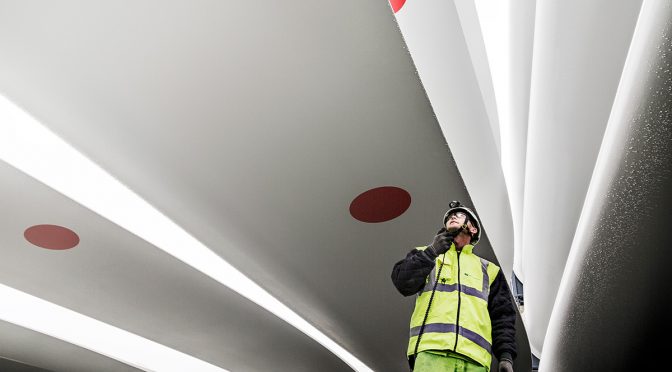On 4 May, the European Technology and Innovation Platform on Wind Energy (ETIPWind) with the support of WindEurope gathered cross-sectoral experts – from the wind energy sector, composite, copper, cement, rare earth industries and the European Commission – to tackle the development of new materials used in wind turbines and turbine recycling.
The EU has committed to cutting greenhouse gas emissions by 55% by 2030, a key milestone in reaching climate neutrality by 2050. To reach these goals the EU needs to speed up wind energy expansion to 27 GW of new capacity each year. And wind turbines – like all machines – have a limited lifetime. 36 GW of onshore capacity is over 15 years old and will reach the end of its operational life in the next 10 years. These turbines will be repowered, given lifetime extension or decommissioned.
Circularity and sustainability will be central to accelerating wind buildout in line with the European Green Deal.
In his opening remarks Policy Officer Raw Materials at DG Grow Milan Grohol identified 30 critical raw materials for strategic technologies and sectors such as wind energy that will be at the core of the European energy transition. The sourcing of rare earth materials such as neodymium and dysprosium remains an issue, the European Commission representative noted. They are a critical component of the permanent magnets used in the generators of wind turbines, but most of them are currently sourced in China.
The European Commission wants to secure the supply of these materials by promoting EU-based mining and the recycling of critical raw materials. This is part of the work of the European Raw Materials Alliance that the EU established in 2020 under the Action Plan on Critical Raw Materials.
Experts from the wind energy sector demonstrated their latest innovations in the field of recycling. Boliden showcased how they aim to create a circular model by recycling metals and projects such as VALOMAG recycling permanent magnets. But the overall application of these practices needs to increase.
Today between 85% and 90% of a wind turbine can be recycled. Companies such as Geocycle already recycle concrete used in turbines. But challenges remain in the recycling of composite materials used in wind turbine blades. Currently these composites can be reused in cement production. But blade recycling remains a top priority for the wind industry.
Large industry players such as Vestas have presented technologies that will tackle this issue and make turbine blades completely recyclable within three years. And the Zebra project has already produced a completely recyclable turbine blade.
Other technological solutions can also help create more sustainable turbine models. Companies such as Modvion, SuperNode and Greenspur are doing just this. Building wooden towers, and using superconducting materials and ferrite magnets were some of the original ideas presented during the ETIPWind workshop. Some of these are already applied in practice.
Participants agreed that to further support these different initiatives the EU needs to continue investing in research and innovation to diversify and scale-up recycling technologies and develop new, high-performance materials. Research should also focus on designs that improve the circularity and recycling abilities of wind turbines. More R&I and industrialisation will help Europe maintain its technological leadership, increase its competitiveness, and reach its climate targets in the most sustainable way.


